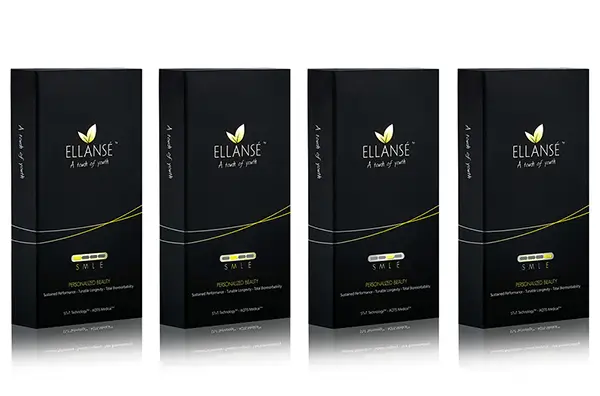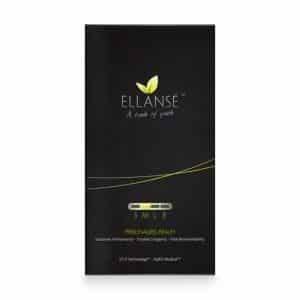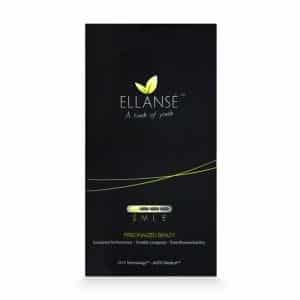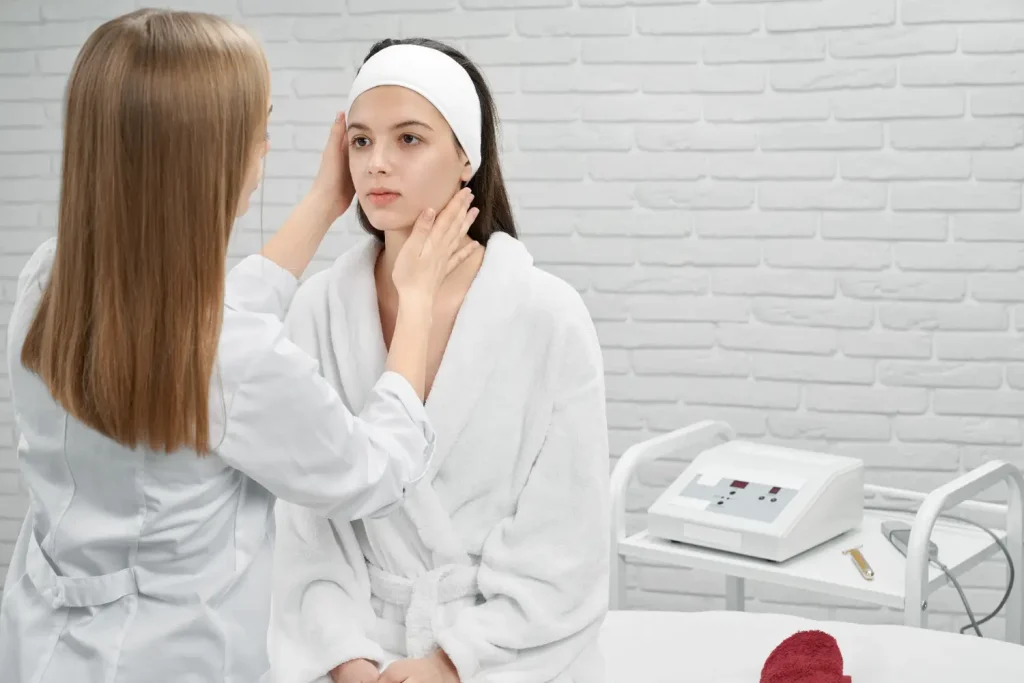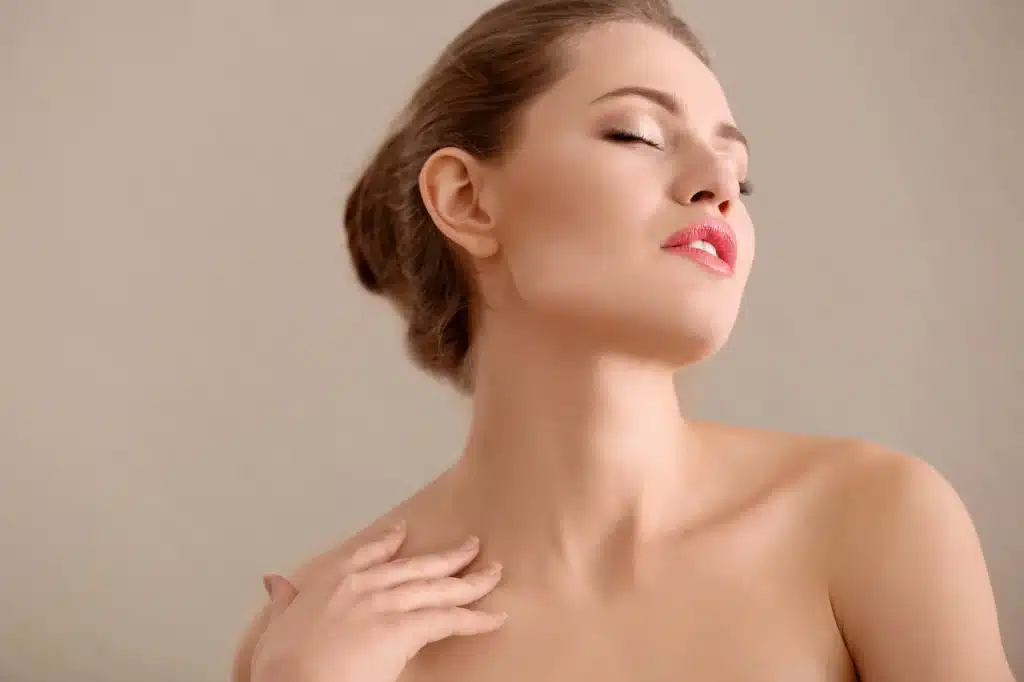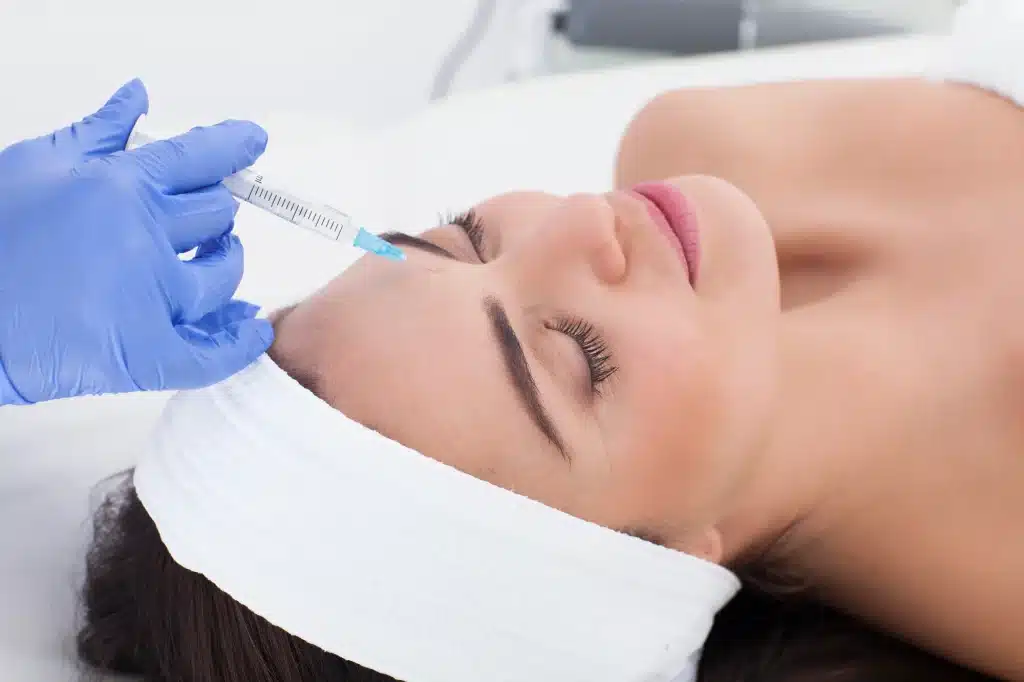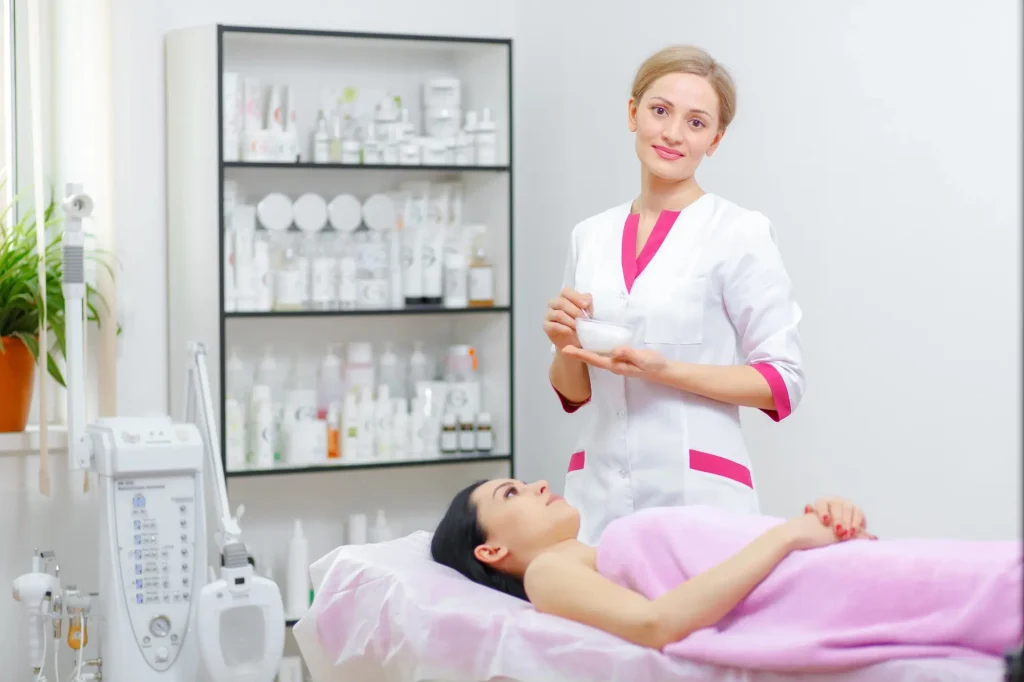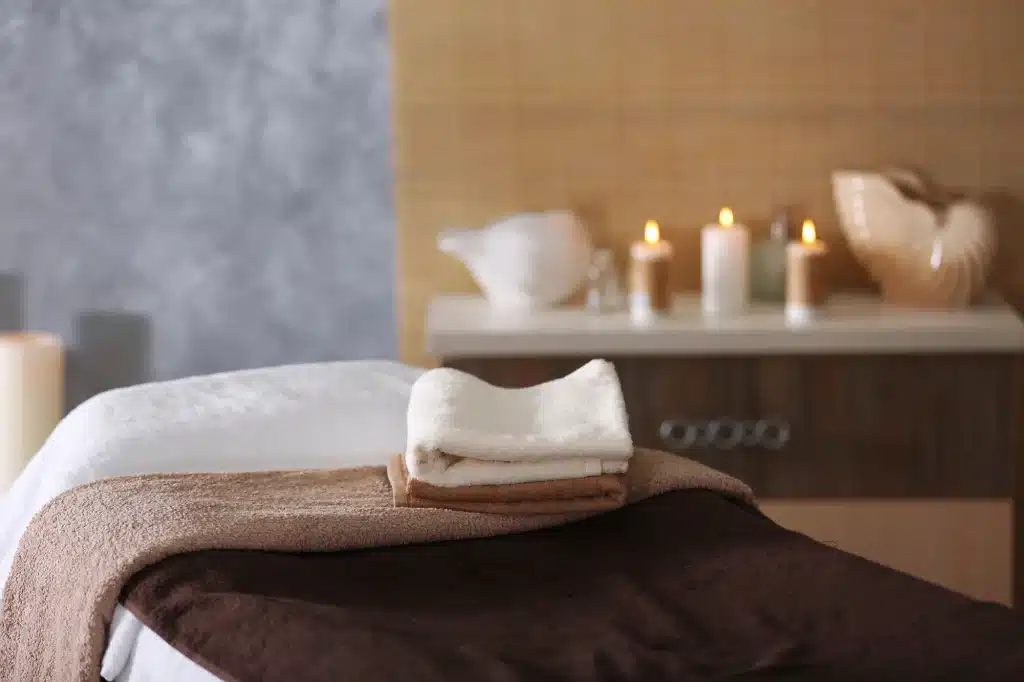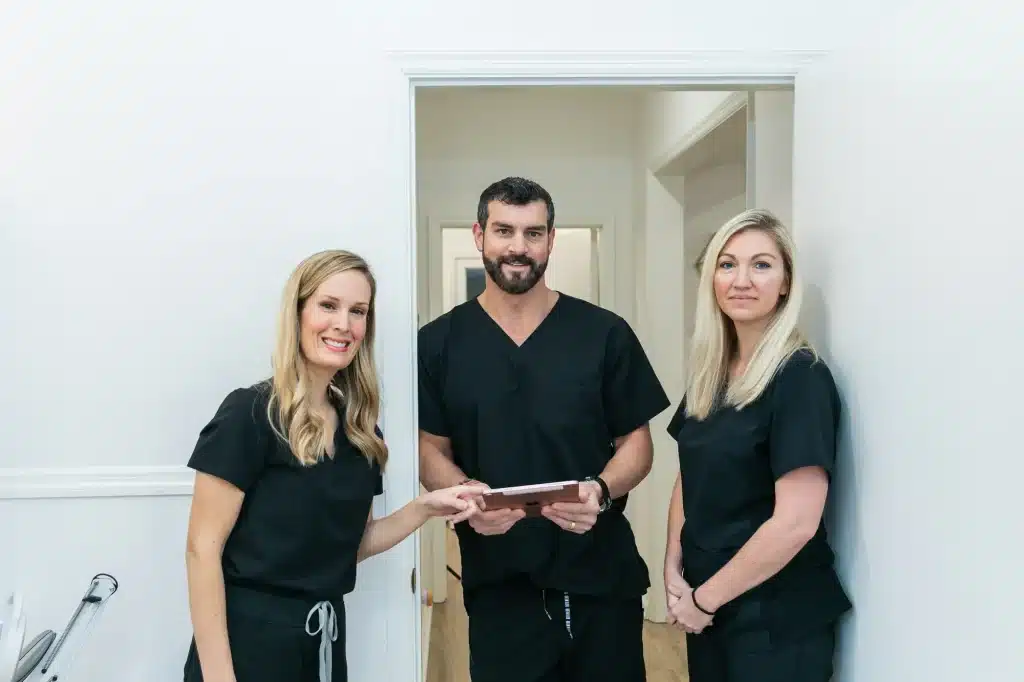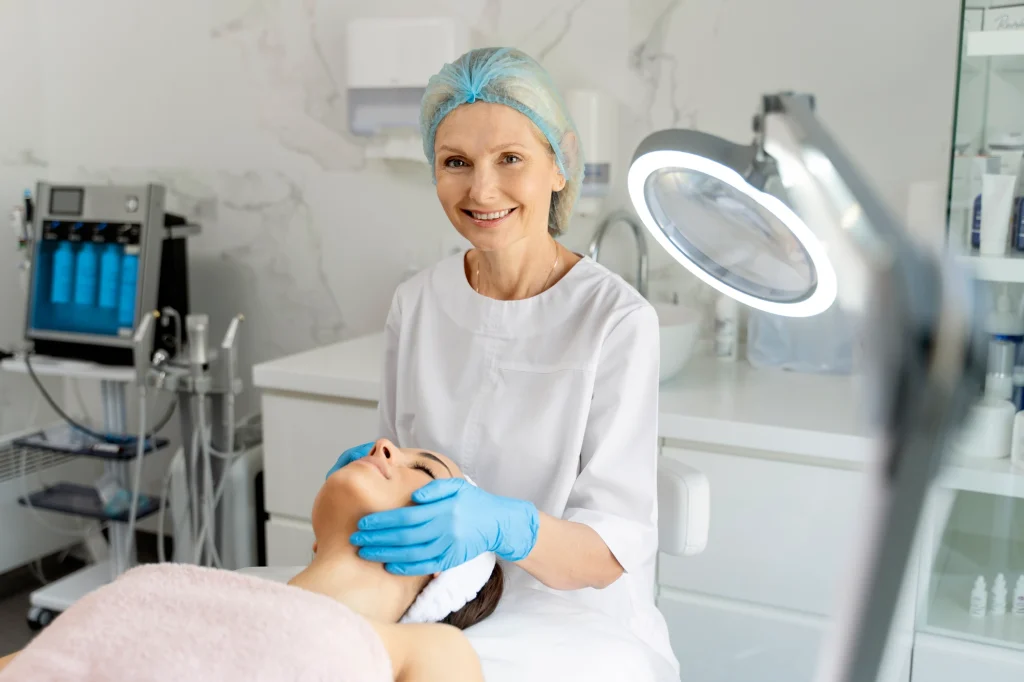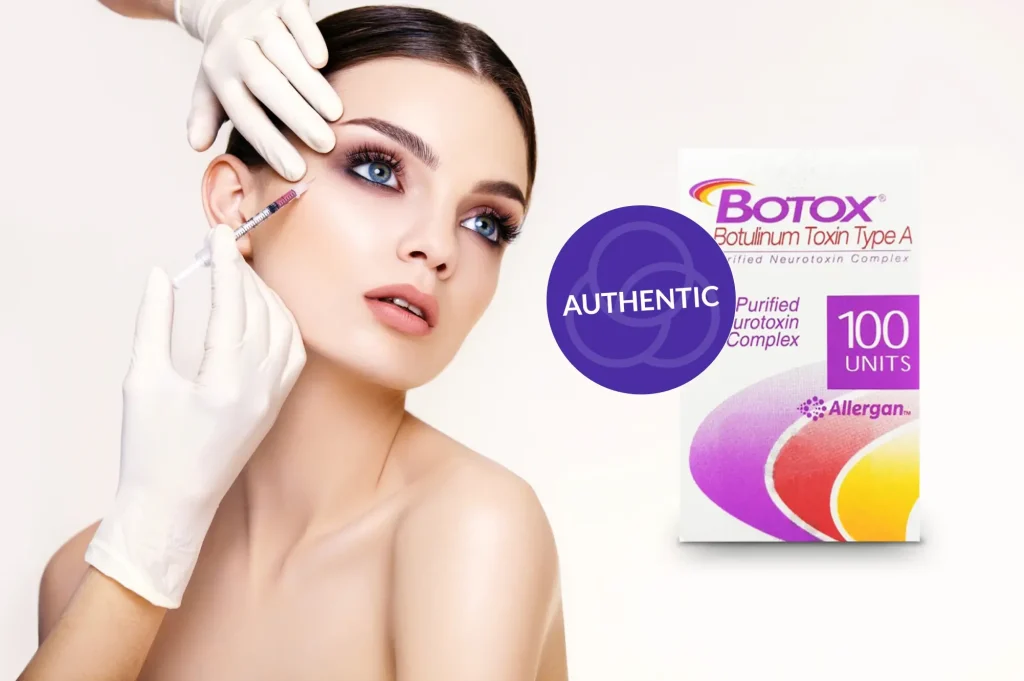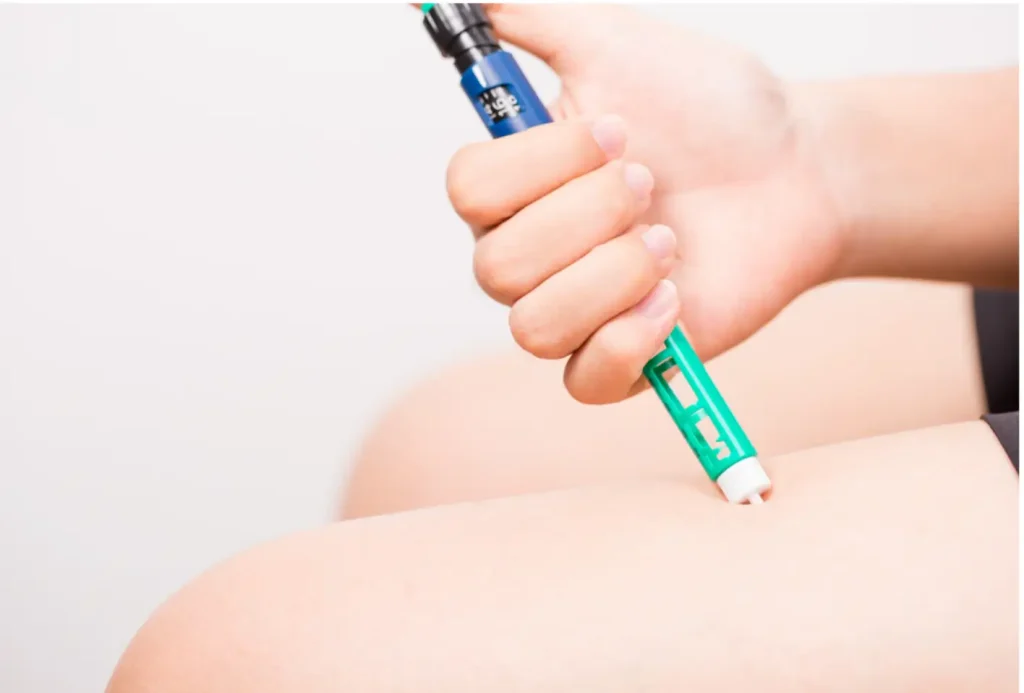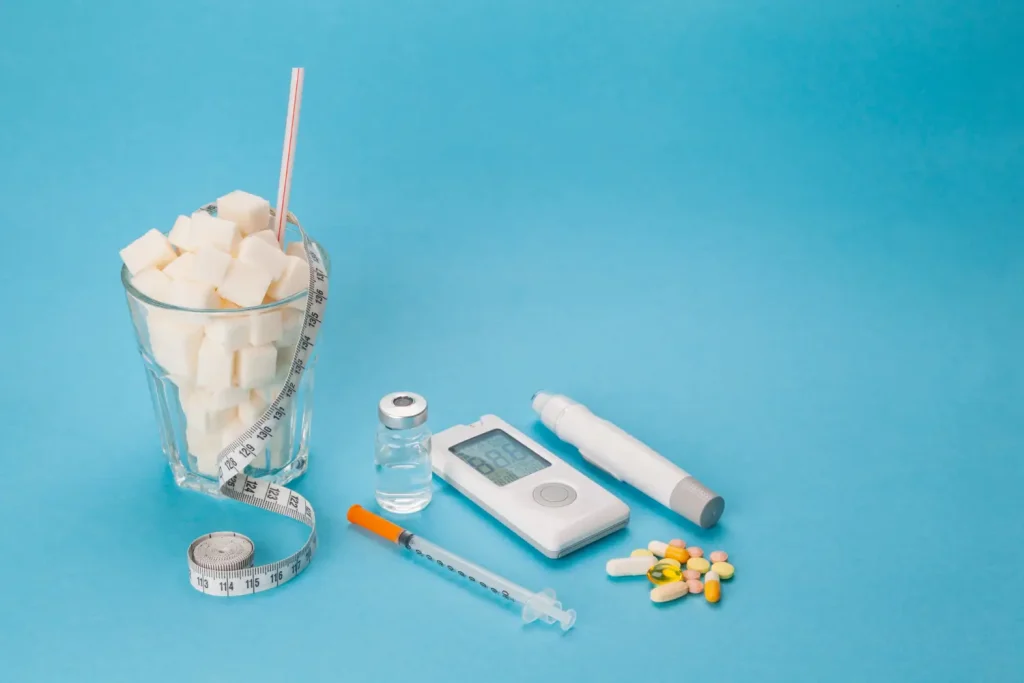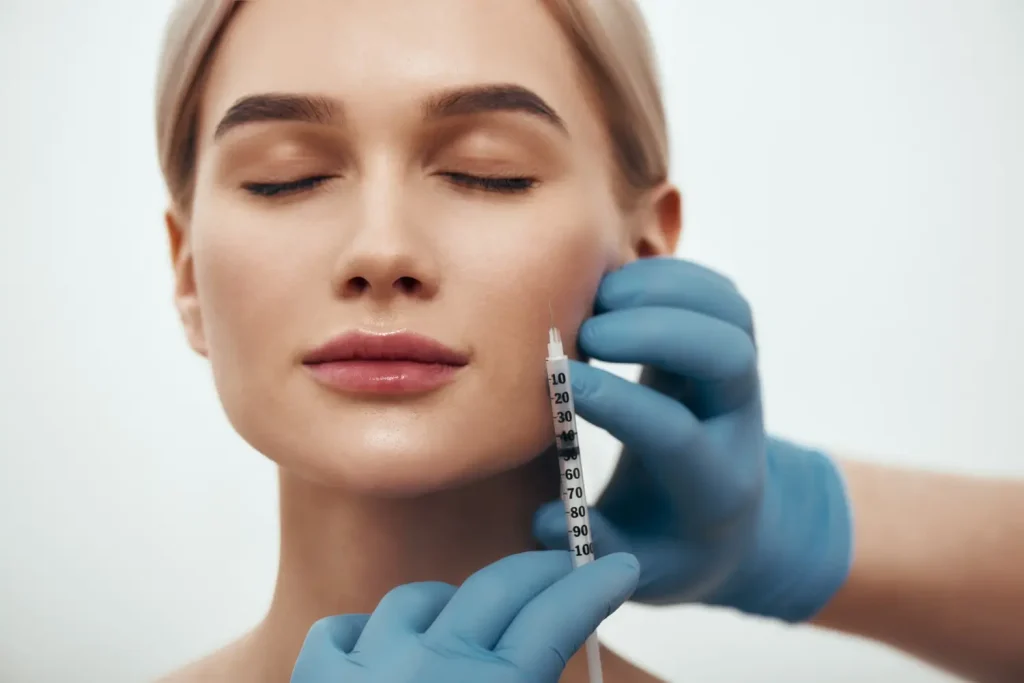Like other dermal fillers, an Ellansé injection provides immediate volume in the face and hands. But what makes it different is that it actively stimulates collagen production. This creates soft results that often look more natural compared to traditional hyaluronic acid dermal fillers.1
Read on to learn how Ellansé stimulates collagen, why it has a long treatment longevity, and effective protocols for face and hand rejuvenation.
Key Takeaways
- Ellansé offers immediate volume, much like HA, and its biostimulatory properties improve skin quality over time.
- The filler’s PCL microspheres stimulate low-intensity collagen production over 2–3 months. This creates a soft volume that lasts up to four years, much longer than typical fillers.
- Upper face Ellansé injections, such as those in the forehead and temples, help fill the area and lift the brow.
- Mid- and lower-face treatments use Ellansé to rebuild structure and reduce wrinkles in areas like the malar region, nasolabial folds, marionette lines, and chin.
- Ellansé face and hand rejuvenation techniques, volume, and entry points depend on your patient’s goals, tissue characteristics, and your preferences as a clinician.
What Is an Ellansé Injection?
Ellansé is a collagen-stimulating dermal filler that provides immediate visible volume and long-term collagen-driven tissue improvement. It is made up of:
- 70% carboxymethyl cellulose (CMC) gel, which gives instant volume and gradually resorbs over 2–3 months
- 30% polycaprolactone (PCL) microspheres, which trigger a low-intensity inflammatory response that stimulates neocollagenesis to form a “mature” type I collagen scaffold. This leads to long-lasting results
Ellansé’s elasticity is higher compared to hyaluronic acid, which means the final volume within the treated area is 20–30% higher than the volume injected.
The filler comes in two options that differ only in lasting duration: Ellansé S (18 months) and Ellansé M (24 months). Both come with ready-to-use 1 ml syringes and 27G needles.2
Ellanse vs. Other Dermal Fillers
What makes Ellansé injections different from other dermal fillers, like hyaluronic acid, is the unique structure of its PCL microspheres. It changes how it works in three ways:
- Delayed phagocytosis and controlled inflammation. The microspheres maintain their integrity over time, which slows phagocytosis and keeps the inflammatory response low. This allows gradual, sustained collagen stimulation rather than rapid filler breakdown.
- Stable particle morphology. Each microsphere has a smooth, spherical surface that remains stable during hydrolysis. This reduces the risk of secondary inflammation and helps the filler integrate naturally into surrounding tissues.
- Low-intensity collagen stimulation. This facial filler maintains a low-intensity inflammatory response that slowly forms more mature and organized type I collagen scaffolds. This creates a soft, natural volume that lasts longer than most temporary fillers.
Ellansé Face and Hand Rejuvenation Injection Points
Here are the muscles usually injected with this long-lasting dermal filler:
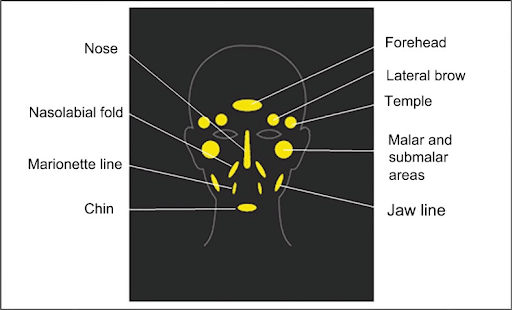
1. Upper Facial Area
The upper facial area is made up of the forehead, lateral brow, and temporal region. With aging, volume loss, fat pad atrophy, and bone resorption can cause the forehead to flatten, the brow to slump, and the temples to hollow out.
Here are the injection sites that Ellansé targets to restore facial volume:
- Forehead. Clinicians place the filler in three places in the supraperiosteal plane to avoid underlying vascular structures: along the midline, 4–5 cm above the orbital rim, and 3.5–4 cm above the orbital rim around the level of the temporal crest.
- Lateral brow. Inject in the supraperiosteal plane directly beneath the lateral brow, with entry points placed superior to the bony orbital rim and lateral to the supraorbital notch.
- Temporal area. Use an avascular area between the superficial layer of the deep temporal fascia and the superficial temporal fascia to fan across and cover the entire temporal fossa.
2. Mid-Face
Here are the injection sites that Ellansé targets in the mid-face to restore structure:
- Malar area. Inject in the supraperiosteal plane. The entry points are placed over the zygoma. This allows the filler to extend toward the zygomatic arch for a uniform result.
- Nose. Use the M version of Ellansé to add volume in depressed areas or smooth out irregularities along the bridge or tip. Injections are made in the supraperiosteal or suprachondral plane as close to the midline of the dorsum.
- Nasolabial folds (NLFs). Inject in the supraperiosteal plane in the upper third of the fold and the subcutaneous plane in the lower two-thirds. Entry points are placed medial to the NLFs.
- Submalar area. Place an injection evenly across the submalar region using a retrograde linear threading technique with fanning and cross-hatching.
3. Lower Facial Area
This region includes the marionette lines, oral commissures, mental crease, chin, prejowl sulcus (PJS), and jawline. Aging can cause a downward pull at the corners of the mouth, which deepens folds and flattens.
Here are the areas Ellansé targets:
- Marionette lines and oral commissures. Inject in the subcutaneous plane, with entry points along the melomental fold and directly under the depressed commissure.
- Mental crease. Injections are placed along the length of the crease laterally along the midline.
- Chin. Place the filler supraperiosteally directly on the bone to make stable structural augmentations. Entry points are lateral to the midline over the mental protuberance.
- Prejowl sulcus. Inject supraperiosteally using one entry point over the defect or top-down from the melomental fold.
- Jawline. Place the filler subcutaneously using entry points that run from the prejowl sulcus to the angle of the mandible.
4. Hands
The dorsum of the hand loses volume with aging due to subcutaneous tissue atrophy, dermal thinning, and reduced elasticity. You can inject this PCL-based stimulator into the most superficial layer to restore fullness and smooth the appearance of veins and tendons.
Entry can be made through a single distal wrist point or via each interdigital space. Avoid bolus injections to make sure the distribution is even.3
Injection Technique Guidelines for Ellansé Face and Hand Rejuvenation
Ellansé’s face and hand rejuvenation protocols depend on which area you want to treat, your preferences as a physician, and tissue characteristics. Here’s a breakdown of the most common techniques and volumes:
| Region | Area | Device | Technique and Volume |
| Upper face | Forehead | 22–25 G blunt cannula | Retrograde linear threading, with the total volume being 2–4 mL |
| Lateral brow | 25–27 G blunt cannula | Retrograde linear threading at 0.05–0.1 mL per thread, with a total of 0.2–0.3 mL per side | |
| Temples | 22–25 G rigid cannula (needle for small corrections) | Retrograde injection at 0.1 mL, with a total of 0.5–1 mL | |
| Mid-face | Malar area | 22–25 G cannula or 27 G needle | Retrograde injection or small pyramidal boluses, with 1 mL per side maximum |
| Nose | Cannula or needle | Retrograde linear threading, with 0.05–0.1 mL per thread | |
| NLFs | 27 G needle | Retrograde fanning and/or small bolus injection in deeper plane, with 0.1 mL max per bolus | |
| Submalar area | 25–27 G blunt cannula or 27 G needle | Retrograde linear threading with fanning and cross-hatching, with 0.05–0.1 mL per thread and a total of 0.5–1 mL | |
| Lower face | Marionette lines and oral commissures | 27 G needle | Fanning, cross-hatching, and microbolus techniques, with 0.05–0.1 mL per bolus and a total of 0.5 mL per side |
| Mental crease | 25–27 G needle | Linear threading and retrograde injection, with 0.05 mL per thread and a total of 0.3–0.4 mL | |
| Chin | 25–27 G needle | Bolus or linear retrograde injection, with about 0.5 mL per side (1 mL average) | |
| PJS | 27 G needle or 25–27 G cannula | Fanning injection, with 0.3–0.6 mL per site | |
| Jawline | 27 G needle or 25–27 G cannula | Vectoring-like fanning injection, with 0.02–0.03 mL per vector (subcutaneous). Mandibular angle multiple boluses require 0.1 mL (supraperiosteal) | |
| Hands | Dorsum of the hand | 22–25 G or 25 G cannula | Superficial subcutaneous injection; bolus not recommended |
Source High-Quality Ellansé With Medical Spa Rx
Ellansé restores lost volume, smooths wrinkles, and improves skin quality over time, so your patients look naturally refreshed without appearing “overdone.” But those results only come with the right injection technique and high-quality products.
At Medical Spa Rx, you’ll find genuine Ellansé sourced directly from licensed distributors. Each syringe comes sealed from the original manufacturer with a verifiable LOT number, so you can verify where it came from.
We also offer no order minimums, fast 3–4 day delivery, and free shipping over $500 to practices and clinics of all sizes.
Check out our catalog at Med Spa Rx today if you’re looking for a reliable, clinic-trusted source for Ellansé!
FAQs
How Long Does Ellansé Last?
Ellansé S lasts about 18 months, while Ellansé M lasts up to 24 months (sometimes even 36 months) because its longer PCL chains degrade more slowly.
Does Ellansé Last Longer Than Hyaluronic Acid Fillers?
Studies show Ellansé improves firmness, density, and texture for up to 12 months without touch-ups.6 In contrast, HA fillers usually have a life of three to 24 months but often require frequent corrections to maintain projection.7
Who Should Not Use Ellansé?
Ellansé is not recommended for patients who are pregnant or breastfeeding, have autoimmune diseases, uncontrolled diabetes, metabolic syndrome, or are taking high-dose steroids. It should also be avoided in areas with infection, active herpes, or bleeding disorders.
References
1. Chen Q, Wang Y. Ellansé: Advanced Technology and Advantageous Selection of New Collagen Stimulating Agents for Face Rejuvenation. Aesthetic Plast Surg. 2024;48(10):1977-1984. doi:10.1007/s00266-023-03761-w
2. Sinclair J. Ellansé: An Expert’s Guide. 2022. https://ellanse.com/media/z4bdzreh/ellans%C3%A9-an-experts-guide-digital-singles-2-00-stc-28mar22singles-1-27-1.pdf Accessed September 6, 2025.
3. de Melo F, Nicolau P, Piovano L, et al. Recommendations for volume augmentation and rejuvenation of the face and hands with the new generation polycaprolactone-based collagen stimulator (Ellansé®). Clin Cosmet Investig Dermatol. 2017;10:431-440. Published 2017 Nov 8. doi:10.2147/CCID.S145195
4. Galadari H, van Abel D, Al Nuami K, Al Faresi F, Galadari I. A randomized, prospective, blinded, split-face, single-center study comparing polycaprolactone to hyaluronic acid for treatment of nasolabial folds. J Cosmet Dermatol. 2015;14(1):27-32. doi:10.1111/jocd.12126
5. Master M, Azizeddin A, Master V. Hyaluronic Acid Filler Longevity in the Mid-face: A Review of 33 Magnetic Resonance Imaging Studies. Plast Reconstr Surg Glob Open. 2024;12(7):e5934. Published 2024 Jul 15. doi:10.1097/GOX.0000000000005934

